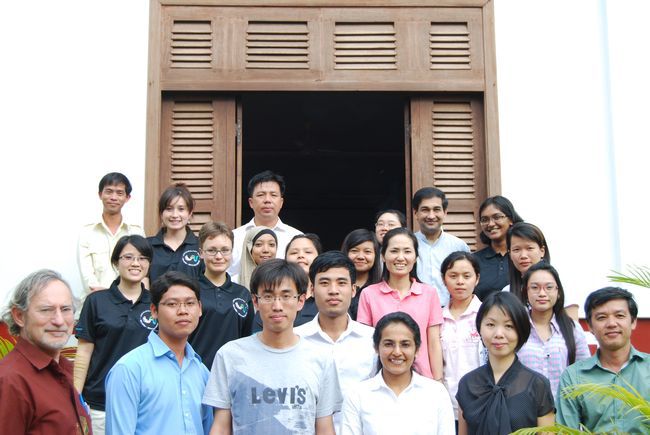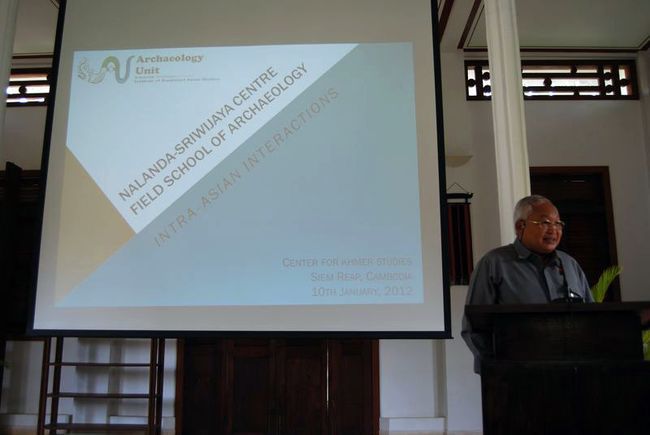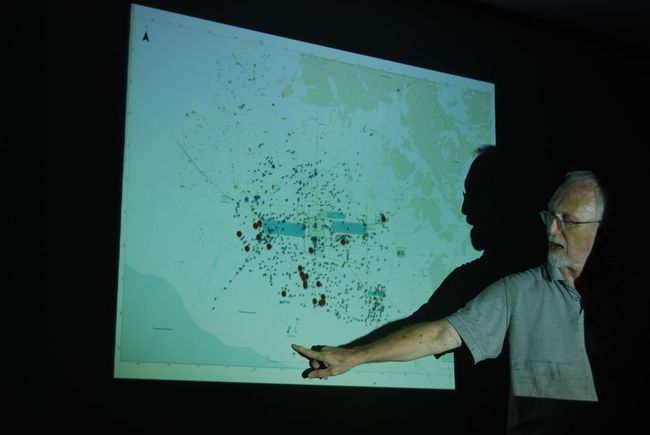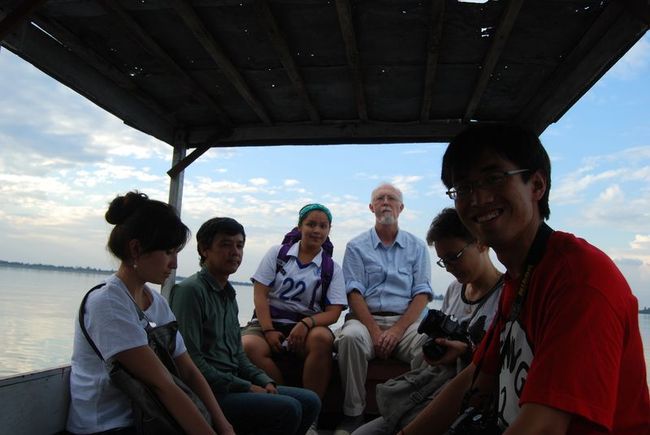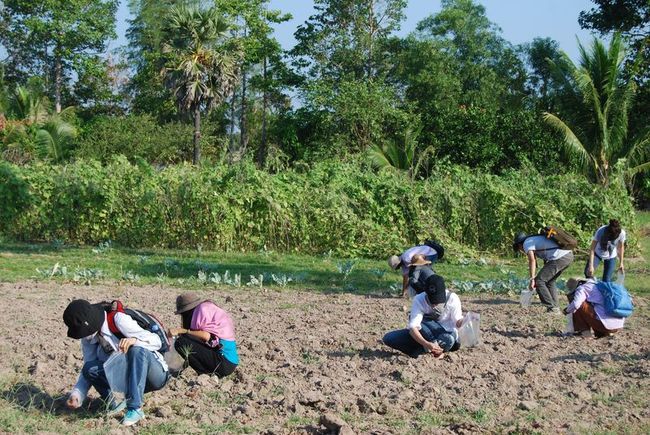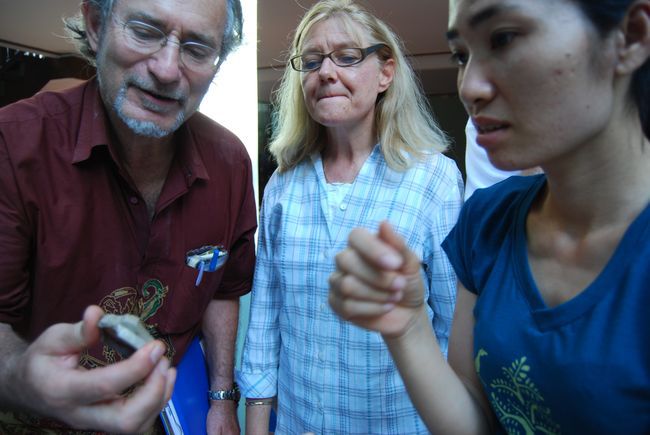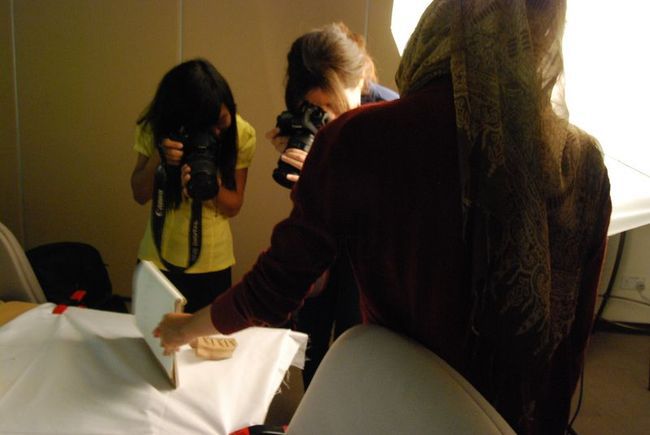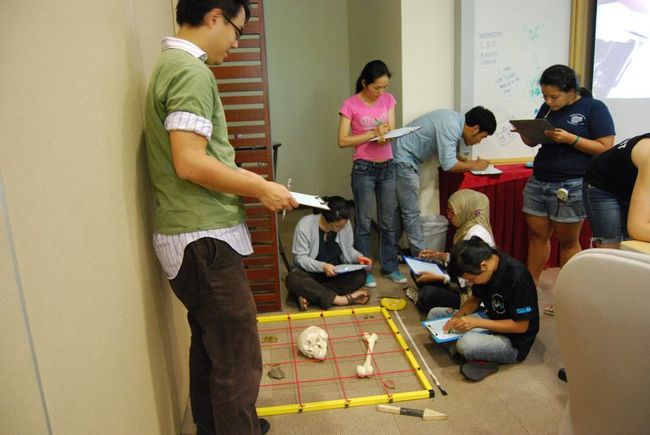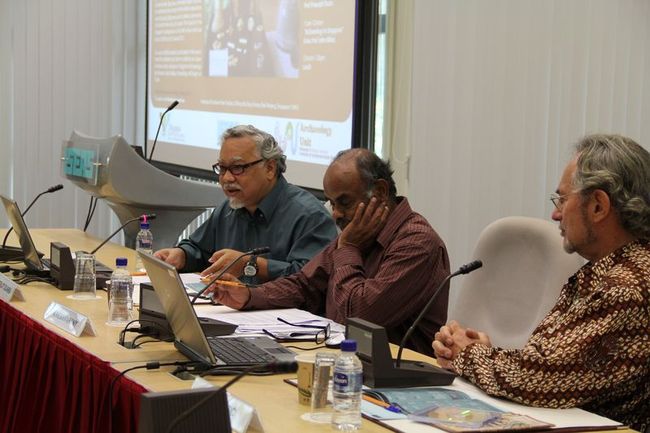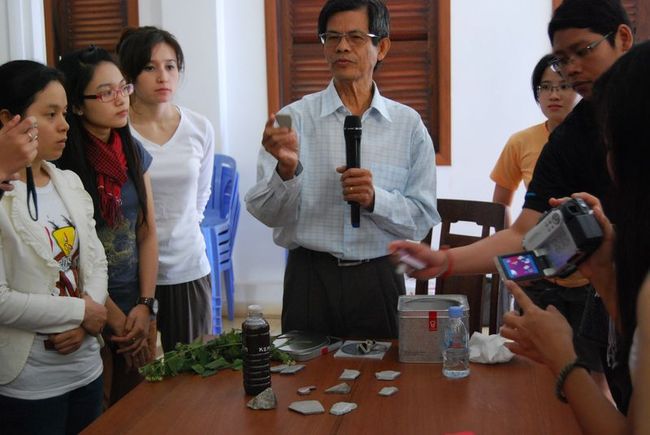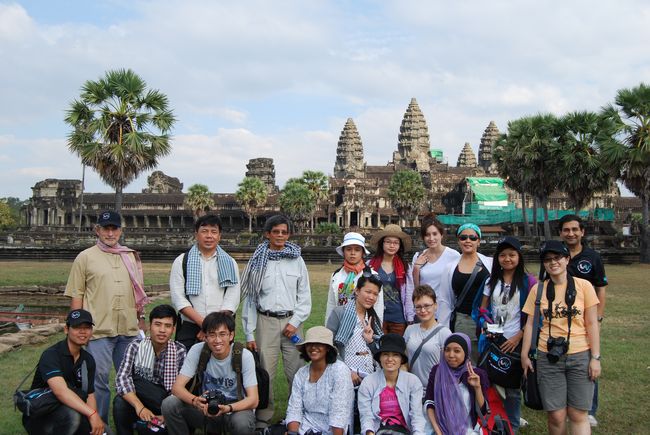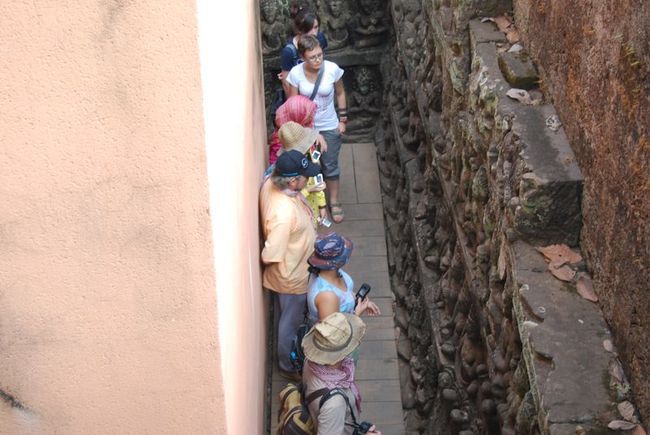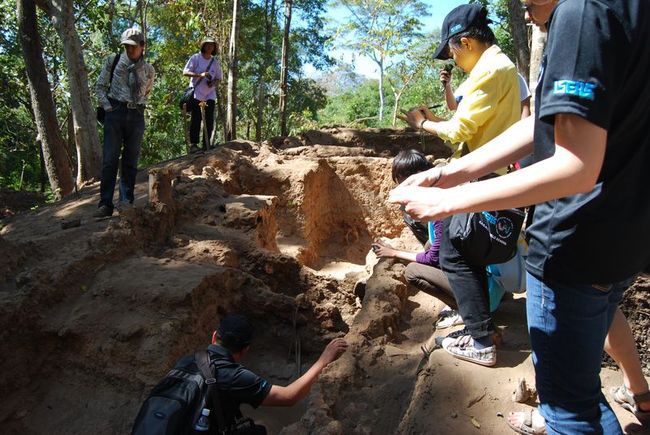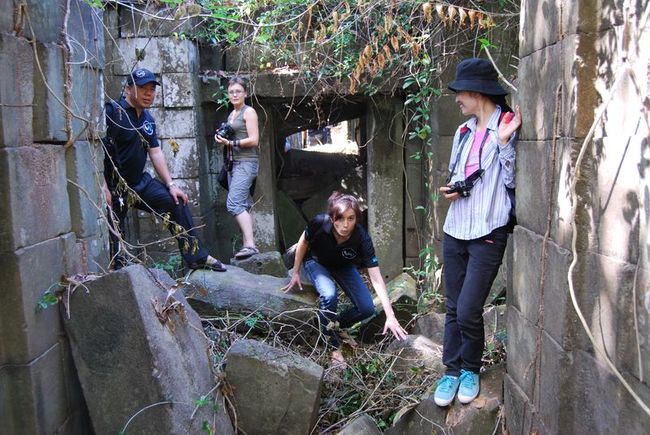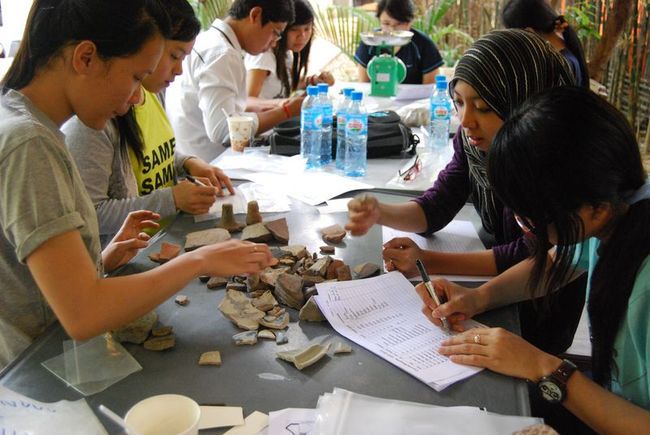
Overview
In 2009, the Institute of Southeast Asian Studies (Singapore) (renamed ISEAS – Yusof Ishak Institute in August 2015) established the Nalanda-Sriwijaya Centre (NSC) with the goal of reviving the ancient university of Nalanda as a center for culture and learning. The NSC conceived of an archaeological training program to support this project, which would bring ten students to Cambodia and Singapore (spending approximately two weeks in each country). The funding for the project is provided by the Singapore Ministry of Foreign Affairs. The teaching staff for the training program has included prominent researchers from Australia, Cambodia, Singapore, and the United States.
This program is meant to contribute to an increased understanding of the ancient and intimate links that have connected Asian countries, to emphasize the history of intra-Asian interactions over the past 2,000 years, and create a community of East Asia Summit (EAS) scholars. It will be through the participants that the training program will disseminate information on the Nalanda University project among the EAS countries’ citizens and governments.
Other institutions within the EAS that collaborated in this project include the Royal University of Fine Arts (RUFA), Authority for the Protection and Management of Angkor and the Region of Siem Reap (APSARA Authority), the Royal Academy of Cambodia, Sydney University, and the Australian National University.
The 18 East Asia Summit countries are: Australia, Brunei, Cambodia, China, India, Indonesia, Japan, Laos, Malaysia, Myanmar (Burma), New Zealand, the Philippines, Russia, Singapore, South Korea, Thailand, the United States, and Vietnam.
General Information
The first session of the field school, which was intially named the NSC Field School of Archaeology, was held from 9th January to 4th February, 2012. The curriculum included lectures, field trips, and laboratory training. Lectures incorporated broad topics—having to do with the historical, economic, and cultural impact of intra-Asian interactions—as well as specific instruction about the analysis and interpretation of Chinese and Southeast Asian ceramics as the most important source of data for the study of this topic. In Cambodia, students worked with Chinese and Khmer ceramics collected from recent fieldwork conducted in the Angkor area by a Cambodian-Australian team in the Robert Christie Centre, a laboratory built in Siem Reap by the University of Sydney. In Singapore, students visited local museums and helped to analyze Chinese and local ceramics excavated from 14th-century sites.
Official announcement | Information Booklet (download as PDF or read online as a flipbook)
NSC Field School of Archaeology Reading List (this was provided to participants as PDFs)
Participants
There were 57 applications to the field school; 10 individuals were selected, with 1 participant each from Cambodia, China, India, Indonesia, Myanmar, the Philippines, Russia, Singapore, Vietnam, and the United States. In addition, 4 local Cambodian participants also attended the Cambodia segment of the field school.
Opening Sessions & Visiting Dignitaries
The field school was officially opened by H.E. Khuon Khun-Neay, the Deputy Director General of APASARA Authority on the 10th of January 2012 at the Centre for Khmer Studies, in Siem Reap, Cambodia. Participants were welcomed by Dr. Michael Sullivan Director of CKS. Numerous Cambodian government officials, particularly from the fields of heritage management and archaeology, attended the opening ceremony. The wives of Singapore’s Minister of Foreign Affairs and the Ambassador to Cambodia of the Republic of Singapore also visited the workshop in the afternoon of the official opening. Dr. Miksic, a member of the board of the Center for Khmer Studies, gave the VIPs a guided tour of the Center.
The Singapore segment was opened by Ambassador Kesavapany, the Director of ISEAS, and Professor Prasenjit Duara, the Raffles Professor of Humanities, and Director at the Asia Research Institute, National University of Singapore, on the 25th of January, 2012.
Several members of the local press corps were in attendance and a resulting article on the field school was published in the Straits Times on the 30th of January, entitled “Building bridges to help dig deeper: New unit aims to bring together region’s young archaeologists.” Dou Hao / Zb Comma also released an article in Mandarin entitled “A New Experience in Archaeology, Bridging the Gaps in History.”
Activities
In Cambodia, the participants attended a series of lectures designed to provide them with a working knowledge of the background to the current state of Cambodian archaeology. These lectures were conducted by local Cambodian archaeologists: Dr. Ly Vanna, Dr. Ea Darith, Mr. Chhay Rachna, and H.E Tan Boun Suy, the Director of Angkor International Documentation for Research Centre of APSARA.
ISEAS Archaeology Unit (AU) staff, together with Cambodian colleagues, conducted field study trips to the Angkor Archaeological Park, the Preah Norodom Sihanouk Museum, and to sites outside of Angkor including Phnom Krom and Beng Melea. The participants also made a visit to the ISEAS AU sponsored excavations at Torp Chey, an 11th to 12th century kiln complex that was recently uncovered.
At the University of Sydney Robert Christie Centre, the participants spent a week learning about laboratory analysis and processing of archaeological ceramics. The students also took part in a field survey conducted by the University of Sydney’s Greater Angkor Project (GAP), and visited the future site of a major research and restoration project at the West Mebon. Instructors included Prof. Roland Fletcher, head of GAP; Dr. Martin Polkinghorne; Mr. Wayne Johnson; Dr. Dougald O’Reilly; and Ms. Linda McLaren.
In Singapore, classes were held to introduce the basics of archaeological artifact photography, artifact illustration, as well as laboratory processing of ceramic finds. Other classroom lessons include lectures on the archaeology of Singapore, inter-Asian interactions past and present, and the students were also introduced to museum management of artifacts, for which four museums and one archaeological site were visited. Prof. Kwa Chong Guan gave a lecture on museology at the NUS Museum. The field school also provided an opportunity for the participants to understand the applications of the past to today’s political agendas as the ISEAS NSC organized a large public seminar titled “An Afternoon with Zheng He” involving the participants; over a hundred people attended the seminar as the subject matter was quite popular. The documentary “Junk History” was screened, followed by a lively discussion between the organizers, audience and the field school participants.
Participant Presentations & Reports
The closing event of the field school consisted of 15-minute individual presentations by the students on their personal experiences, their insights about Inter-Asian Interactions gained from the field school, as well as the impact of the field school on the trajectories for their own future research and contribution to Southeast Asian archaeology and scholarship. Each participant submitted two separate written papers on interactions within Asia, based on their experiences in Cambodia and Singapore, as reflected in history and archaeology.
Image Gallery



